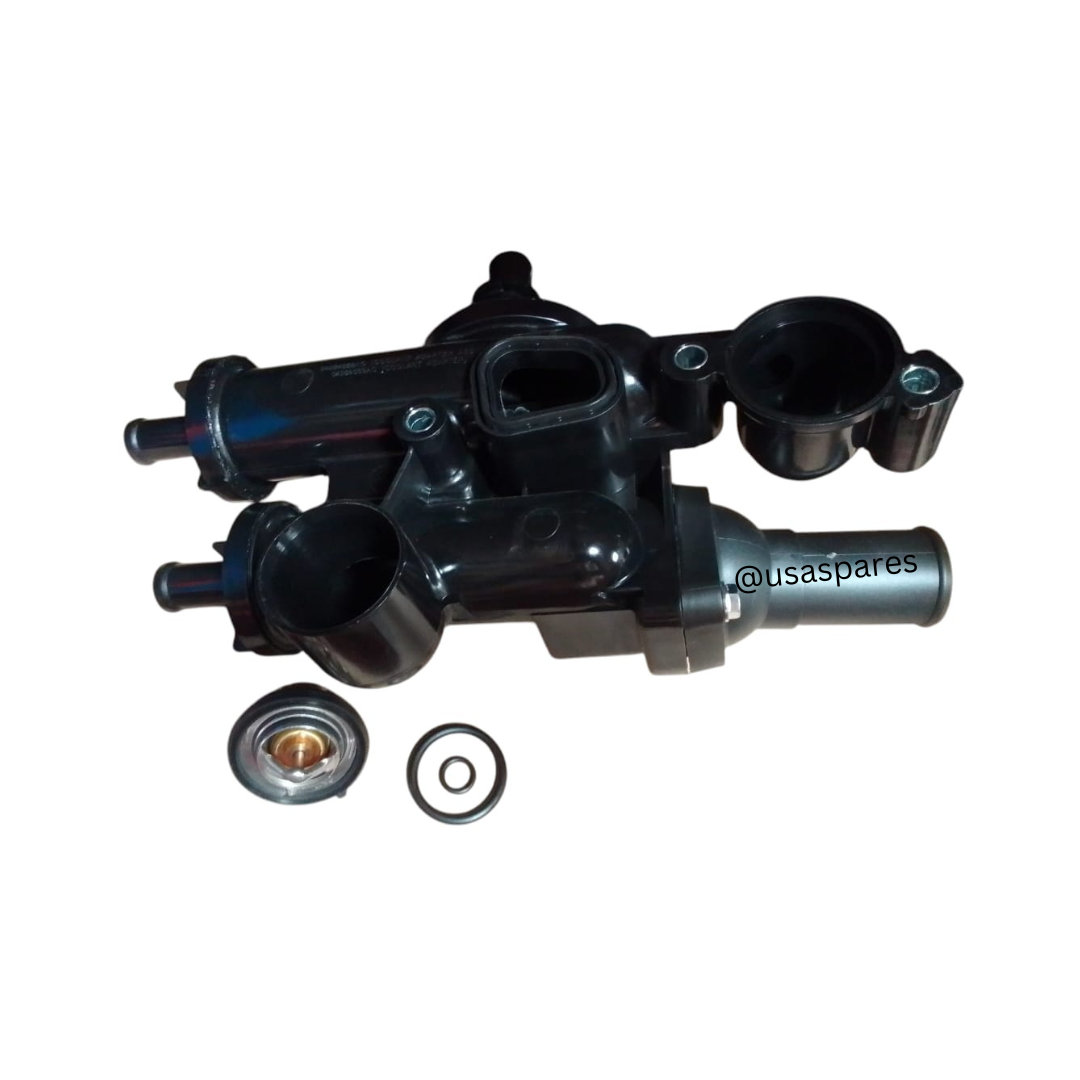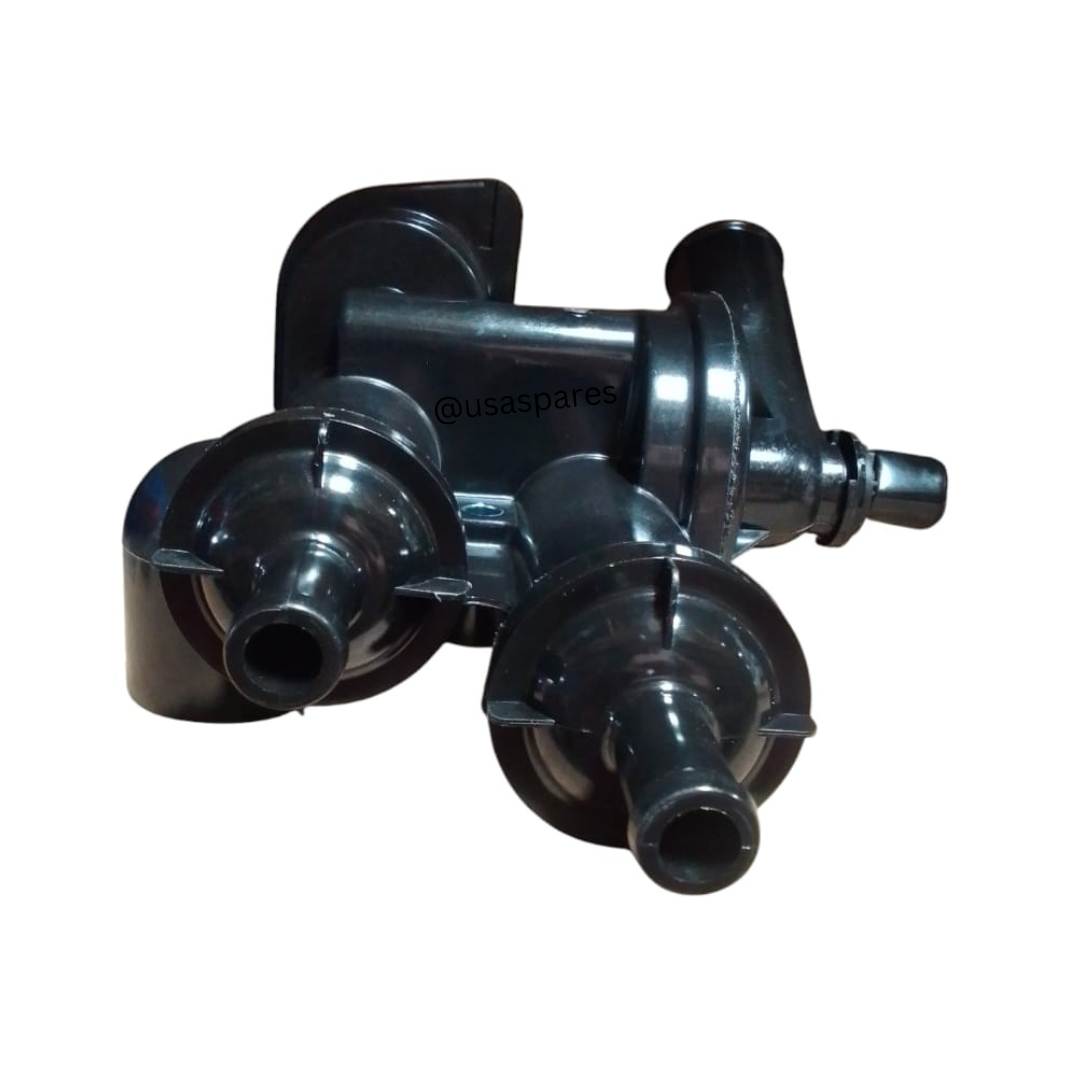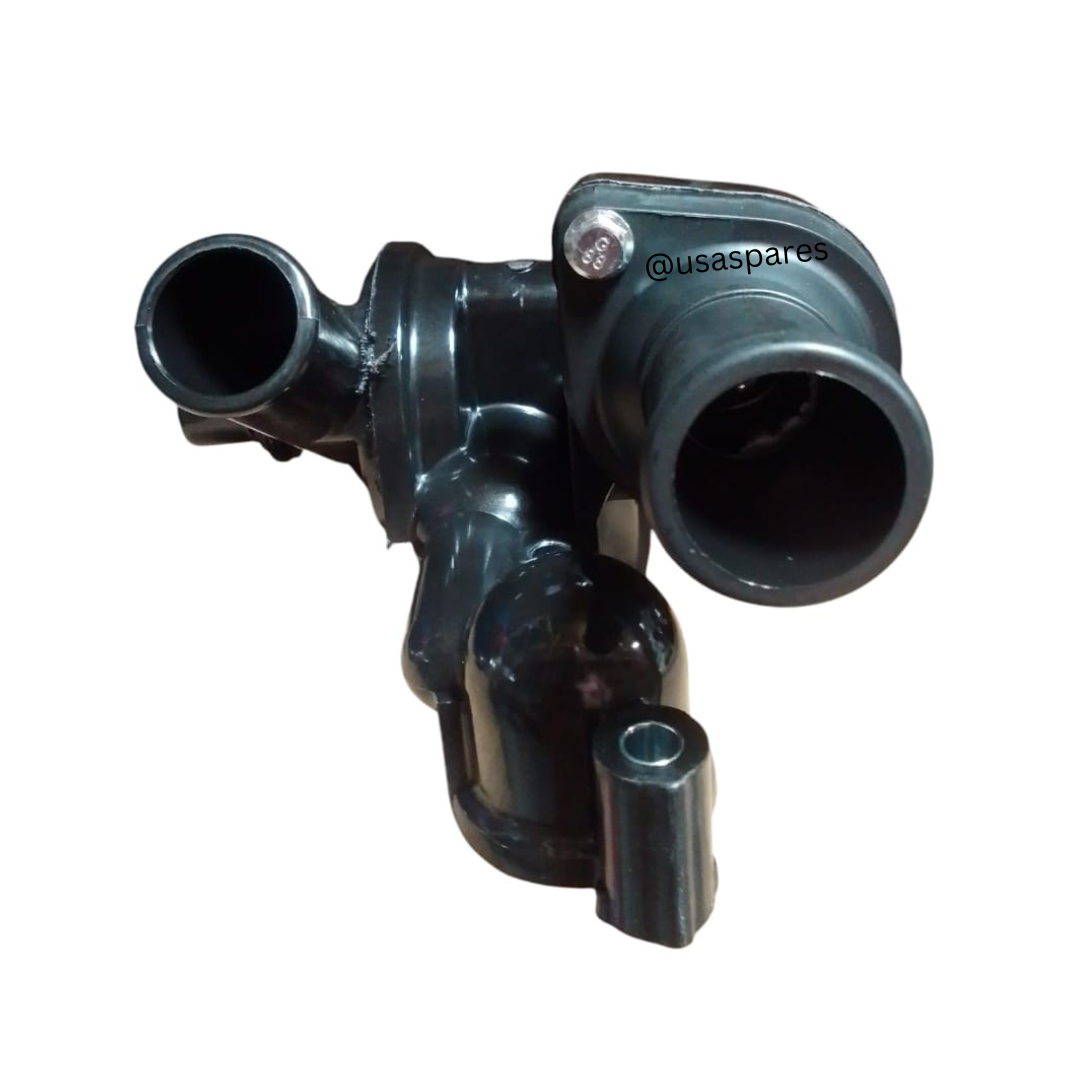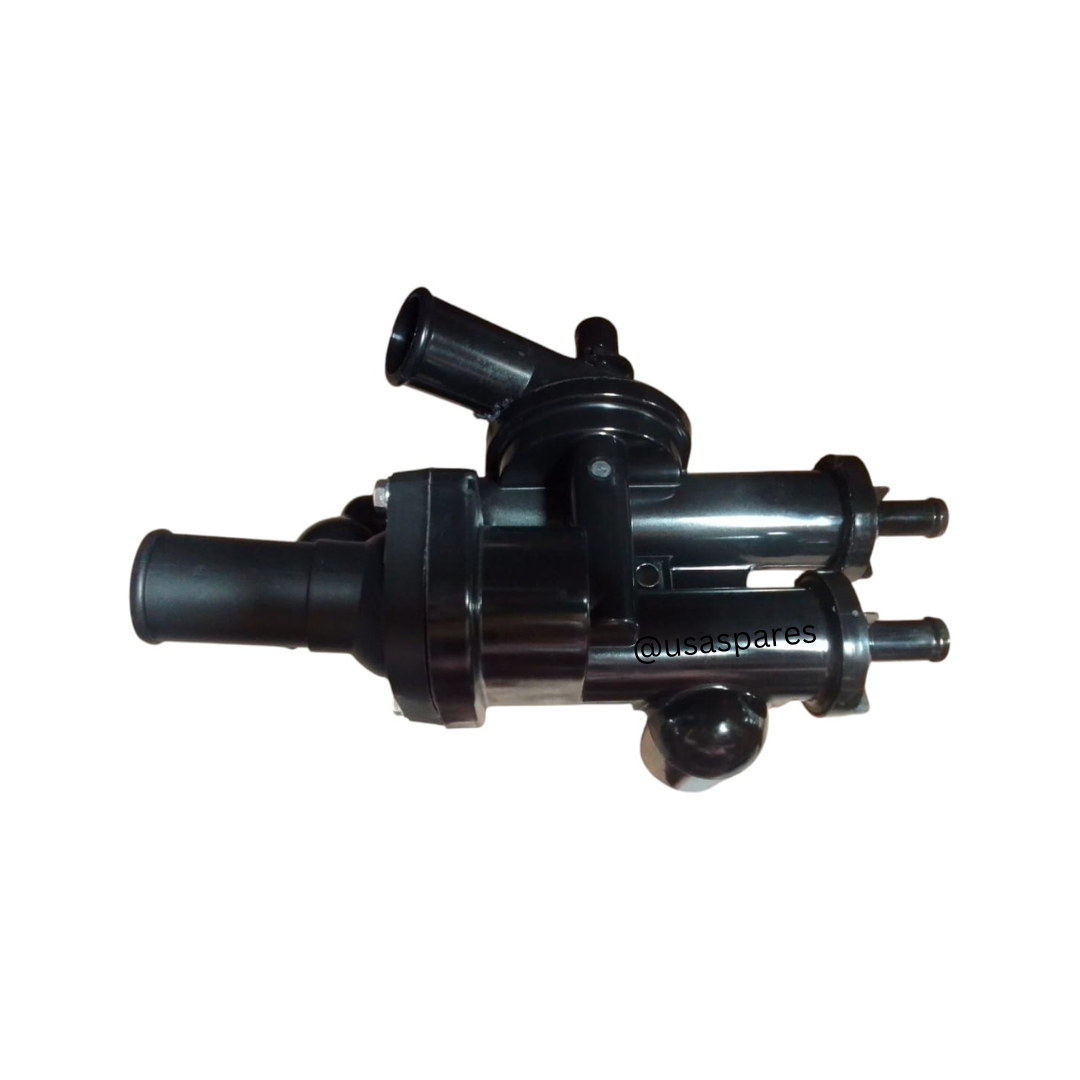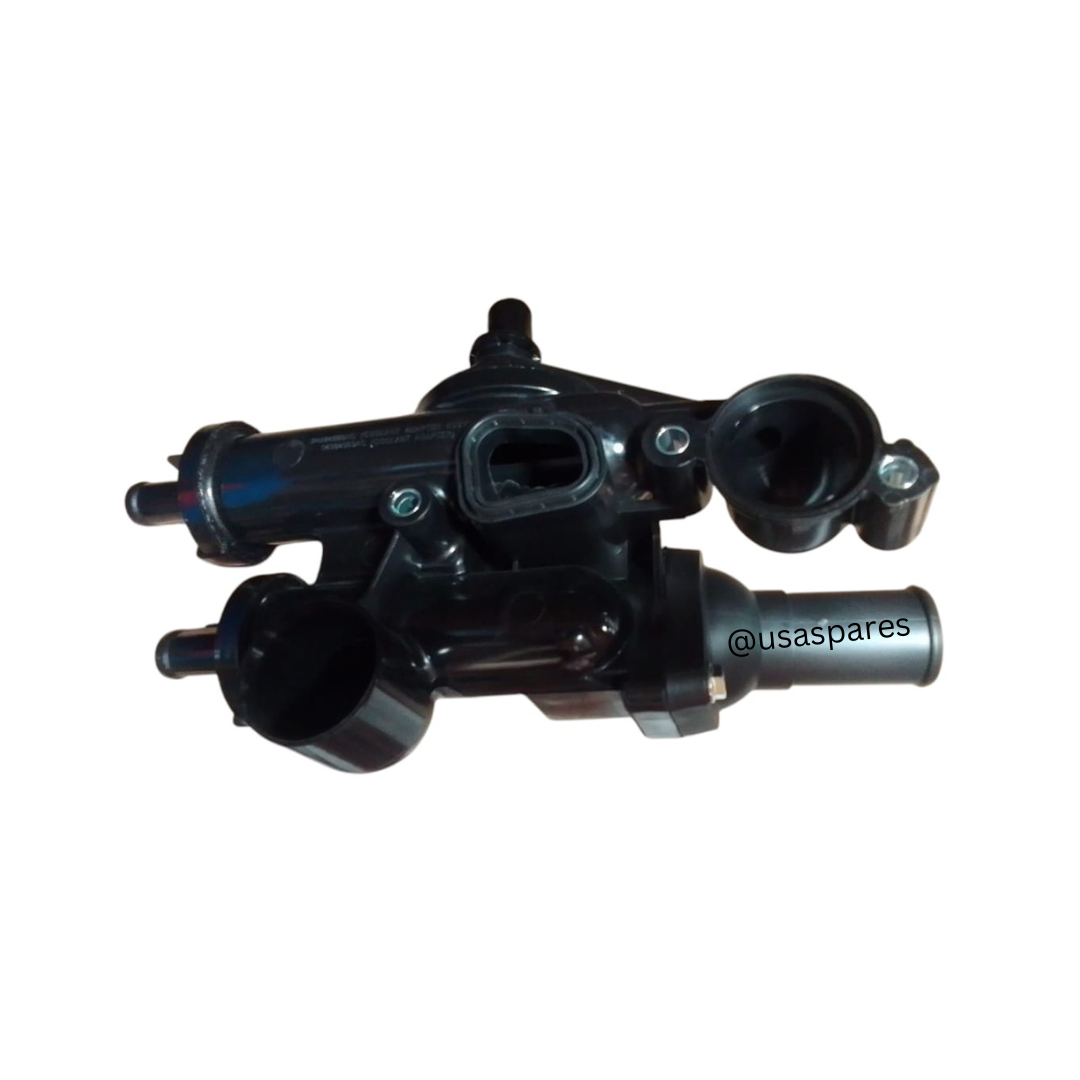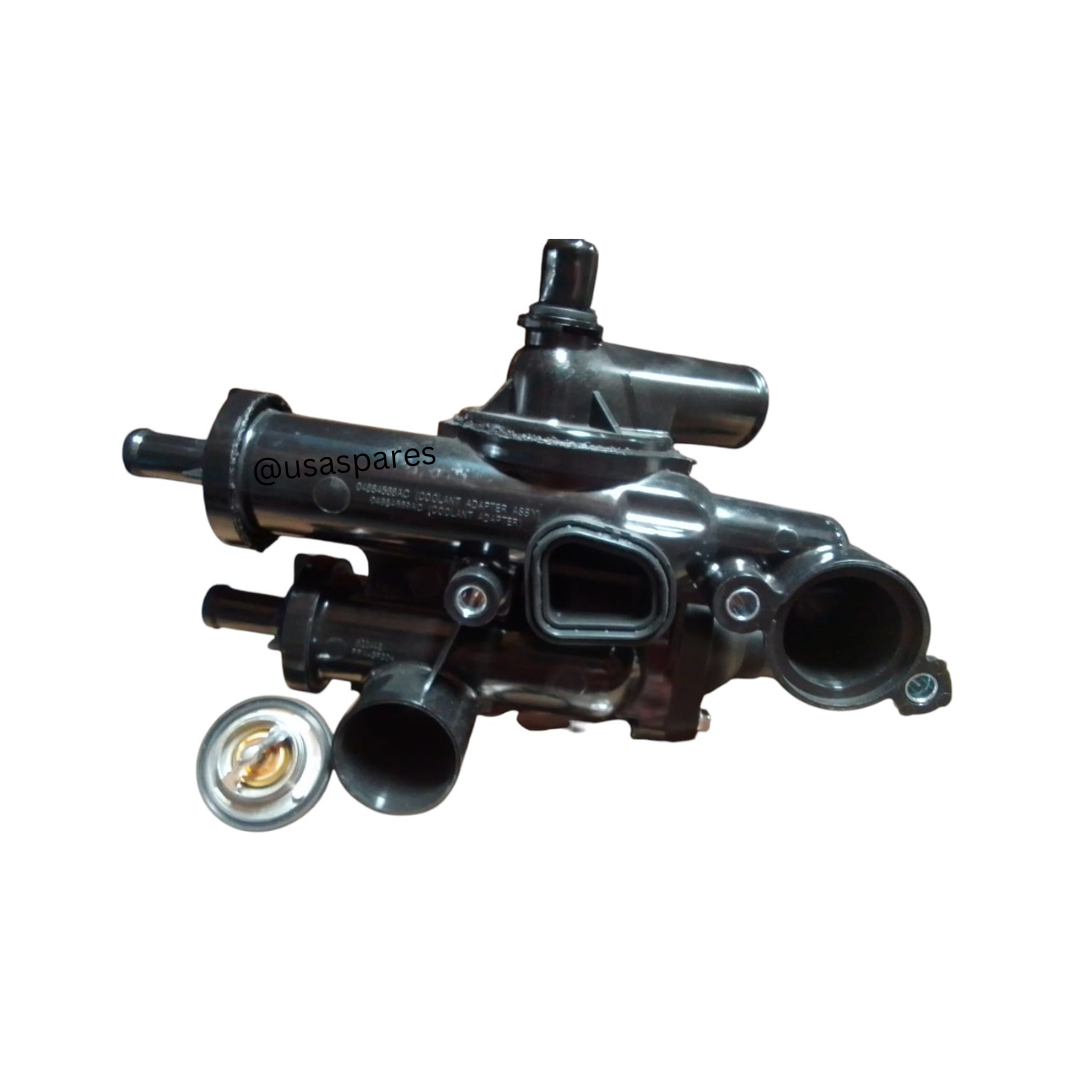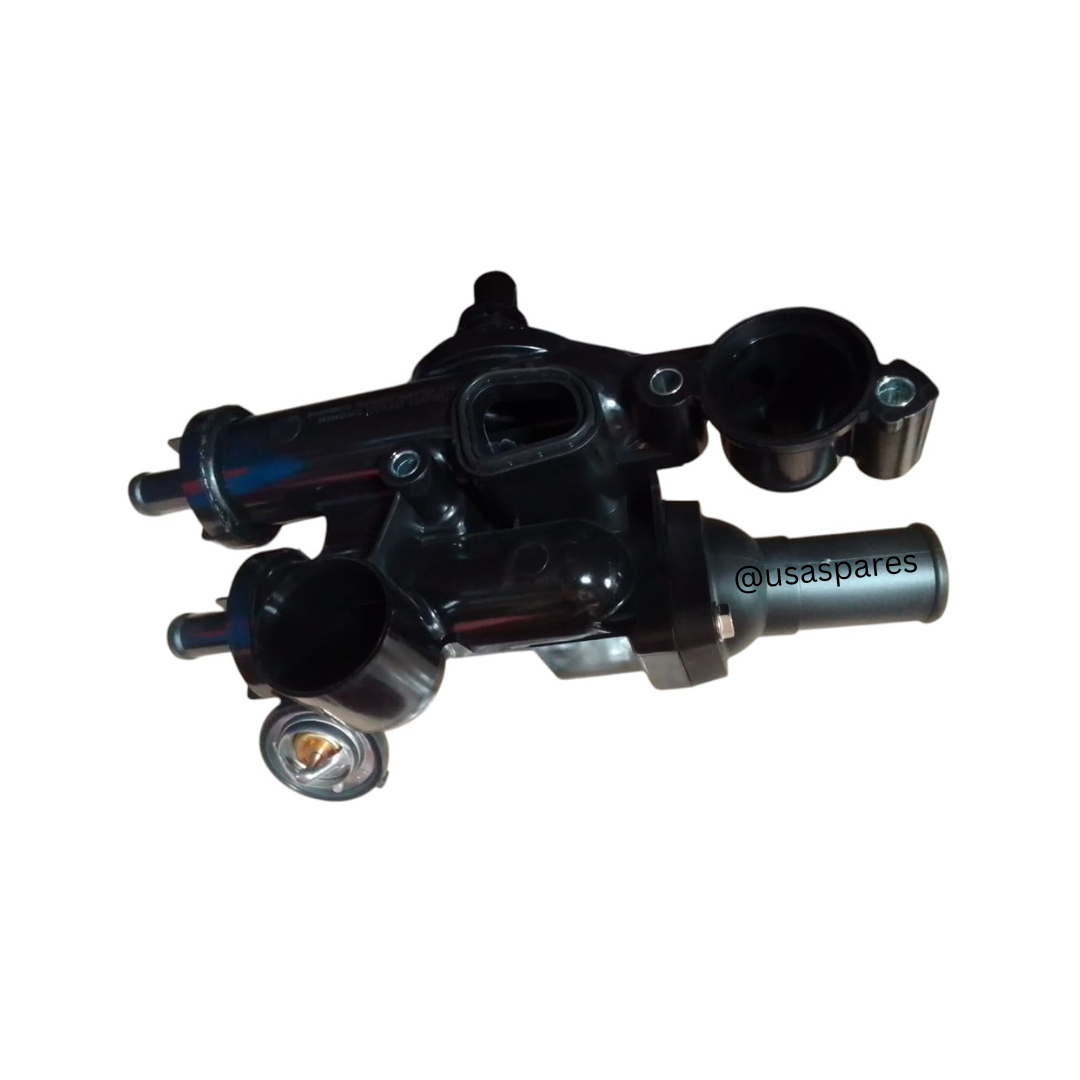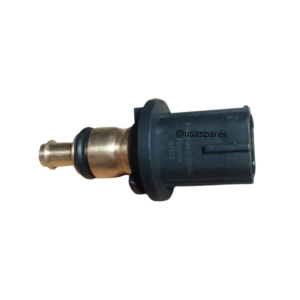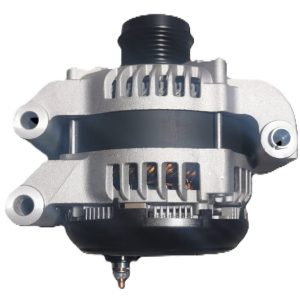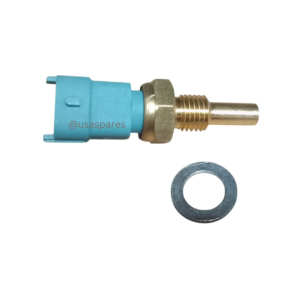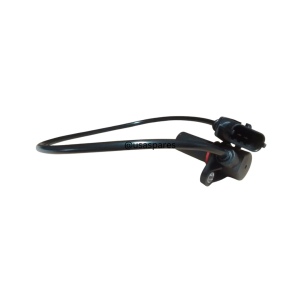Description
Dodge Caliber Thermostat Housing / Water Outlet – Essential Cooling System Component
The thermostat housing or water outlet in the Dodge Caliber is an integral part of the engine’s cooling system. This component houses the thermostat, which regulates the engine’s temperature by controlling the flow of coolant through the engine. The thermostat opens and closes based on the engine’s temperature, ensuring that the engine operates at the ideal temperature range. The housing or water outlet provides a secure housing for the thermostat while also directing coolant into the engine, radiator, and other cooling system components.
A well-functioning thermostat housing is crucial for preventing the engine from overheating or running too cold. If the housing becomes damaged or leaks, it can lead to coolant loss, which compromises the engine’s cooling capabilities. Overheating can cause severe engine damage, leading to costly repairs and reduced engine life. A properly working thermostat housing ensures that the coolant circulates effectively, maintaining an optimal engine temperature and preventing problems such as poor fuel efficiency, engine knocking, or even a complete engine failure.
Key Features of Dodge Caliber Thermostat Housing / Water Outlet:
- Durable Construction: Typically made from high-quality materials such as aluminum or reinforced plastic to resist corrosion and withstand high engine temperatures.
- Precise Coolant Flow: Designed to regulate coolant flow and maintain a stable engine temperature, optimizing engine performance.
- Thermostat Housing Design: Securely houses the thermostat, ensuring its proper function in regulating coolant circulation.
- OEM Fit and Compatibility: Designed to directly replace the original thermostat housing, ensuring a proper fit and reliable performance.
- Prevents Engine Overheating: By ensuring accurate temperature regulation, it helps prevent overheating, which can lead to severe engine damage.
Signs of a Failing Thermostat Housing / Water Outlet:
- Coolant Leaks: Visible coolant puddles or stains around the housing, indicating a potential leak.
- Overheating Engine: Rising temperature gauge or frequent overheating could be a result of a malfunctioning thermostat housing.
- Low Coolant Levels: A significant drop in coolant levels, often due to leaks from a damaged housing.
- Engine Misfire or Poor Performance: Overheating caused by a malfunctioning thermostat housing may lead to engine knocking, poor performance, and reduced fuel efficiency.
- Check Engine Light: A failing thermostat housing or water outlet can trigger the check engine light or other warning indicators on the dashboard.
Why Replace a Faulty Thermostat Housing?
If the thermostat housing is leaking, cracked, or damaged, it can lead to coolant loss and overheating, which can cause serious engine problems. Replacing a faulty thermostat housing ensures that coolant circulates effectively and maintains the proper operating temperature for the engine. In addition to preventing engine overheating, a new thermostat housing can help improve fuel efficiency and prevent other cooling system components from becoming damaged due to improper temperature regulation.
Installation & Maintenance Tips:
- Use OEM or High-Quality Aftermarket Parts: Always use parts that match the specifications of the original equipment for a proper fit and long-lasting performance.
- Inspect for Leaks: Regularly check for coolant leaks around the thermostat housing to detect potential issues before they cause significant damage.
- Flush the Cooling System: When replacing the thermostat housing, it’s a good idea to flush the cooling system to remove any debris or old coolant that could clog the system.
- Replace the Thermostat: If the thermostat is old or damaged, it’s recommended to replace it at the same time as the thermostat housing to ensure optimal cooling system function.
For Dodge Caliber owners, maintaining a properly functioning thermostat housing / water outlet is crucial for keeping the engine cool and running smoothly. Regular inspection and timely replacement of a faulty housing can help prevent overheating and costly repairs, ensuring your engine performs at its best for the long term.

